-
 Bitcoin
Bitcoin $115000
0.12% -
 Ethereum
Ethereum $3701
4.50% -
 XRP
XRP $3.081
2.99% -
 Tether USDt
Tether USDt $0.0000
-0.01% -
 BNB
BNB $767.9
1.45% -
 Solana
Solana $169.5
3.13% -
 USDC
USDC $0.9999
0.01% -
 Dogecoin
Dogecoin $0.2106
4.30% -
 TRON
TRON $0.3334
1.62% -
 Cardano
Cardano $0.7564
2.54% -
 Stellar
Stellar $0.4165
0.76% -
 Hyperliquid
Hyperliquid $38.75
0.25% -
 Sui
Sui $3.593
3.00% -
 Chainlink
Chainlink $17.08
3.59% -
 Bitcoin Cash
Bitcoin Cash $573.6
4.35% -
 Hedera
Hedera $0.2508
-0.84% -
 Avalanche
Avalanche $23.07
6.46% -
 Ethena USDe
Ethena USDe $1.001
-0.02% -
 Litecoin
Litecoin $120.8
8.17% -
 UNUS SED LEO
UNUS SED LEO $8.943
-0.32% -
 Toncoin
Toncoin $3.400
-5.60% -
 Shiba Inu
Shiba Inu $0.00001255
1.54% -
 Uniswap
Uniswap $9.908
6.32% -
 Polkadot
Polkadot $3.718
2.10% -
 Monero
Monero $303.0
-0.74% -
 Dai
Dai $0.9999
-0.02% -
 Bitget Token
Bitget Token $4.392
0.91% -
 Cronos
Cronos $0.1403
6.31% -
 Pepe
Pepe $0.00001076
1.13% -
 Aave
Aave $267.2
1.80%
How does USDT achieve price stability?
USDT's $1 peg, crucial for its cryptocurrency ecosystem role, relies on claimed 1:1 USD backing, though transparency and audits of reserves remain debated. Market forces and regulatory scrutiny also significantly influence its price stability.
Mar 16, 2025 at 03:11 am
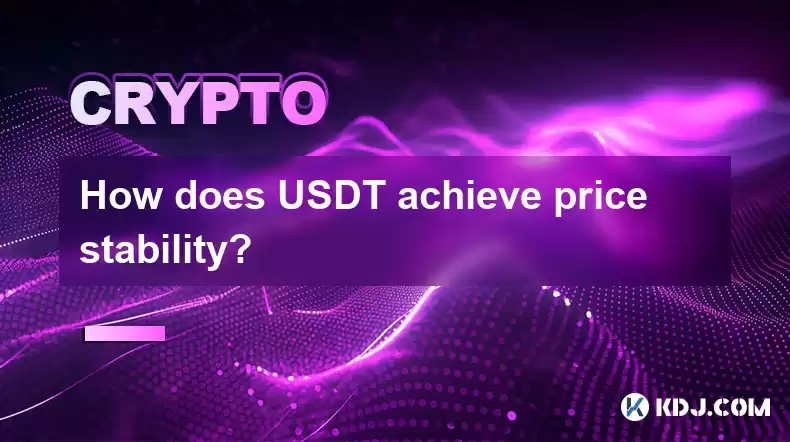
Key Points:
- USDT's price stability relies primarily on its claimed 1:1 backing by USD reserves.
- Transparency and audits of these reserves are crucial but have been a source of ongoing debate and scrutiny.
- Market forces, including supply and demand, can still influence USDT's price, albeit usually within a narrow band around $1.
- Regulatory scrutiny and potential legal challenges impact USDT's stability and its future prospects.
- Understanding the mechanisms behind USDT's price stability requires examining both its claimed backing and its market dynamics.
How Does USDT Achieve Price Stability?
Tether (USDT), the largest stablecoin by market capitalization, aims to maintain a stable price of $1. This peg is crucial for its use in the cryptocurrency ecosystem, allowing users to mitigate volatility inherent in other cryptocurrencies. However, the mechanisms behind this stability are complex and often debated. The core principle is that each USDT in circulation is supposedly backed by a corresponding $1 held in reserves.
This 1:1 backing is the foundation of USDT's price stability claim. Tether Limited, the issuer, asserts that these reserves consist primarily of USD, but also includes other assets like commercial paper, certificates of deposit, and other short-term securities. The composition of these reserves is a key area of contention.
The transparency surrounding these reserves has been a major point of criticism. While Tether has released occasional attestations from accounting firms, these have often been criticized for lacking sufficient detail or independence. The lack of fully transparent and independently audited reserves fuels concerns about the true backing and the potential for de-pegging.
Even with claimed full backing, market forces can influence USDT's price. If demand for USDT increases significantly, the price might temporarily rise above $1. Conversely, if there's a surge in selling pressure, the price could dip below $1. However, these fluctuations are generally minor and short-lived, as arbitrage opportunities quickly emerge to correct any significant deviations.
Arbitrage plays a vital role in maintaining USDT's price. If USDT trades below $1 on an exchange, arbitrageurs can buy USDT cheaply and simultaneously sell an equivalent amount of USD, profiting from the price difference. This buying pressure pushes the price back towards $1. The reverse happens when USDT trades above $1.
Regulatory scrutiny presents a significant external factor influencing USDT's stability. Governments worldwide are increasingly scrutinizing stablecoins, including Tether, due to concerns about consumer protection, financial stability, and potential money laundering risks. The legal and regulatory landscape is constantly evolving, creating uncertainty about the long-term stability of USDT.
The interplay between claimed backing, market forces, arbitrage, and regulatory oversight determines the extent of USDT's price stability. While Tether strives to maintain the $1 peg, the lack of complete transparency and the inherent volatility of the cryptocurrency market introduces inherent risks. Understanding these complexities is crucial for anyone using or investing in USDT.
Understanding the Composition of USDT Reserves
The precise composition of USDT's reserves remains a subject of intense debate. While Tether claims a 1:1 backing primarily with USD, the inclusion of other assets like commercial paper raises questions. Commercial paper, while generally considered low-risk, can still fluctuate in value depending on the issuer's creditworthiness.
The lack of detailed breakdowns of these reserve assets hampers independent verification of Tether's claims. This lack of transparency leaves room for speculation and undermines trust in the stability of the peg. Greater transparency regarding the specifics of the reserve holdings is critical for building confidence in the system.
The Role of Audits and Transparency
The quality and frequency of audits are essential for assessing the credibility of USDT's claims. While Tether has provided some attestations, concerns persist regarding their scope and independence. A truly independent and comprehensive audit, regularly conducted by a reputable firm, would significantly enhance transparency and bolster confidence.
The lack of consistent and thorough audits raises concerns about the potential for discrepancies between the stated reserves and the actual backing of USDT. This uncertainty contributes to the risk associated with holding or using USDT.
Market Dynamics and Arbitrage
Market forces, including supply and demand, play a significant role, even with claimed 1:1 backing. Sudden changes in investor sentiment or unexpected events can create temporary deviations from the $1 peg. However, arbitrage mechanisms often act as a self-correcting mechanism.
Arbitrageurs profit by exploiting price discrepancies. If USDT trades below $1, they buy it cheaply and sell USD, pushing the price back up. This process helps maintain the peg in the short term, but doesn't guarantee long-term stability.
Regulatory Landscape and Legal Challenges
The regulatory landscape for stablecoins is evolving rapidly, presenting both opportunities and challenges for USDT. Increased regulatory scrutiny could lead to stricter requirements for transparency and reserve management. Conversely, it could also enhance investor protection and overall stability.
Legal challenges and investigations into Tether's operations further add to the uncertainty surrounding its future. The outcome of these legal proceedings could significantly impact the stability of USDT and its continued operation.
Frequently Asked Questions:
Q: Is USDT truly backed 1:1 by USD? A: Tether claims a 1:1 backing, primarily by USD, but the exact composition and transparency of reserves are subject to ongoing debate and scrutiny. Independent verification remains limited.
Q: How does arbitrage help maintain USDT's price? A: Arbitrageurs profit from price differences. If USDT trades below $1, they buy it cheaply and sell USD, pushing the price back up. This process helps maintain the peg, but it is not a guarantee.
Q: What are the risks associated with using USDT? A: Risks include the lack of complete transparency regarding reserves, potential de-pegging from the $1, regulatory uncertainty, and the potential for legal challenges.
Q: What is the role of audits in ensuring USDT's stability? A: Independent and comprehensive audits are crucial for verifying Tether's claims about reserve holdings. The lack of consistent and thorough audits raises concerns about potential discrepancies.
Q: How do market forces affect USDT's price? A: While Tether aims for a 1:1 peg, market supply and demand can cause temporary fluctuations. However, arbitrage often helps to quickly correct these deviations.
Disclaimer:info@kdj.com
The information provided is not trading advice. kdj.com does not assume any responsibility for any investments made based on the information provided in this article. Cryptocurrencies are highly volatile and it is highly recommended that you invest with caution after thorough research!
If you believe that the content used on this website infringes your copyright, please contact us immediately (info@kdj.com) and we will delete it promptly.
- Bitcoin, Fed Rate Cut, and Crypto Stocks: A New Yorker's Take
- 2025-08-05 14:50:12
- Police, Cryptocurrency, Bitcoin Windfall: Unexpected Gains and Cautionary Tales
- 2025-08-05 15:30:12
- MAGACOIN: The Next Shiba Inu ROI? A Crypto Presale Deep Dive
- 2025-08-05 15:30:12
- Bitcoin, Kiyosaki, and the August Curse: Will History Repeat?
- 2025-08-05 14:50:12
- Crypto Airdrops: Your August 2025 Guide to Free Tokens & Opportunities
- 2025-08-05 13:45:13
- Luxury Dining Reimagined: St. Regis Singapore & Marriott's Culinary Celebration
- 2025-08-05 13:45:13
Related knowledge
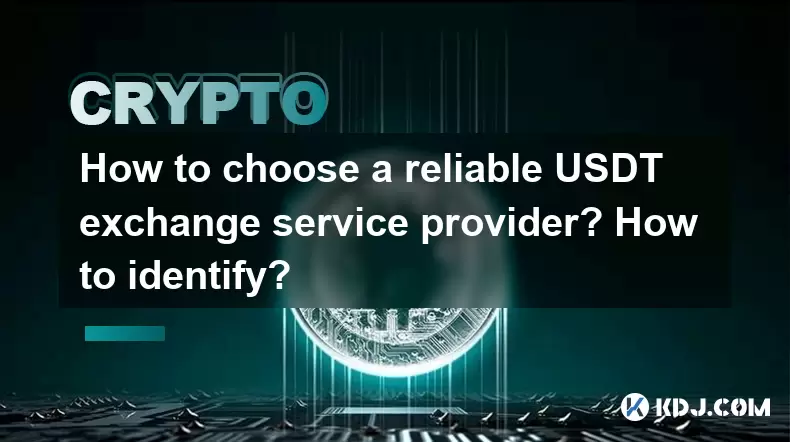
How to choose a reliable USDT exchange service provider? How to identify?
Jun 12,2025 at 03:15pm
Understanding the Role of USDT in Cryptocurrency TradingUSDT (Tether) is one of the most widely used stablecoins in the cryptocurrency market. It is d...
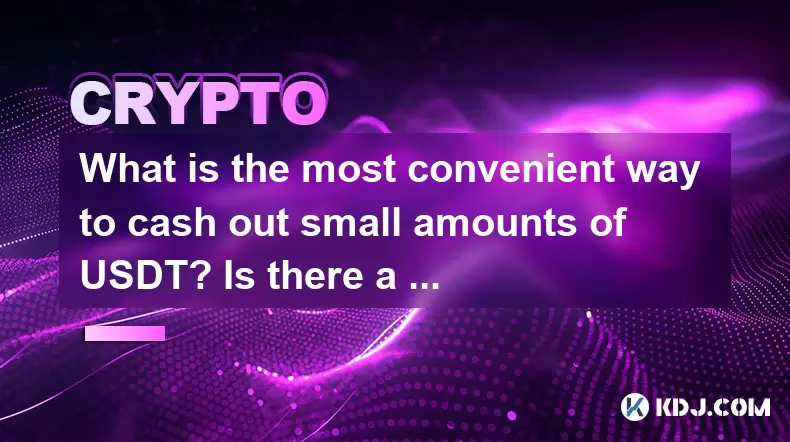
What is the most convenient way to cash out small amounts of USDT? Is there a shortcut?
Jun 11,2025 at 11:00pm
Understanding the Need to Cash Out Small USDT AmountsCashing out small amounts of USDT can be a challenge for many crypto users. Traditional methods o...
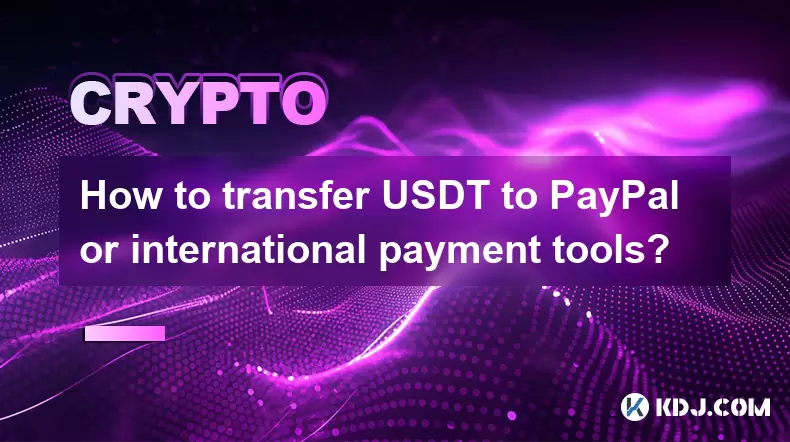
How to transfer USDT to PayPal or international payment tools?
Jun 15,2025 at 05:28am
Understanding the Basics of USDT and PayPal IntegrationUSDT (Tether) is a stablecoin pegged to the US dollar, offering blockchain-based value transfer...
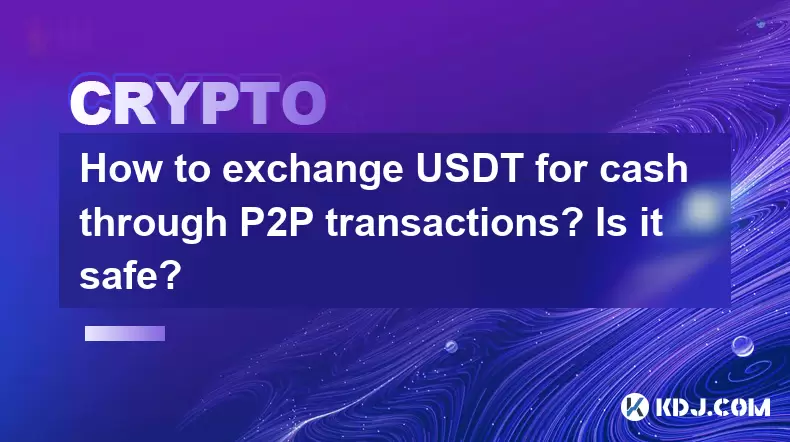
How to exchange USDT for cash through P2P transactions? Is it safe?
Jun 18,2025 at 07:56am
Understanding USDT and P2P TransactionsTether (USDT) is a stablecoin pegged to the value of the US dollar, making it a popular choice for users who wa...
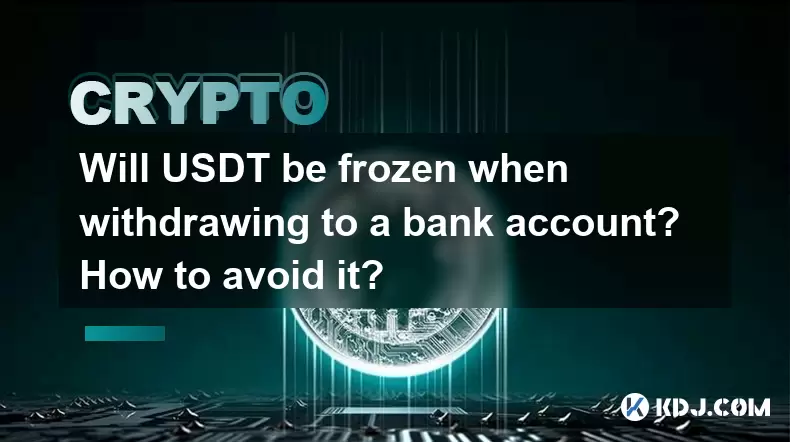
Will USDT be frozen when withdrawing to a bank account? How to avoid it?
Jun 15,2025 at 10:03am
Understanding USDT Withdrawals and Bank Account Freezing RisksWhen users decide to withdraw USDT (Tether) to a bank account, one of the most common co...
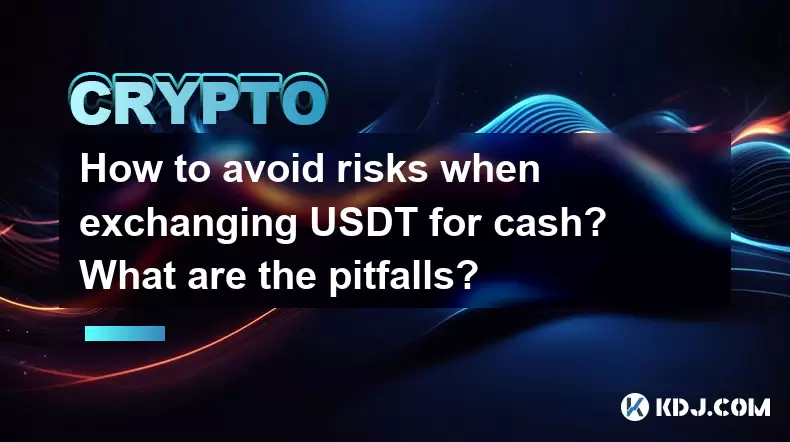
How to avoid risks when exchanging USDT for cash? What are the pitfalls?
Jun 11,2025 at 08:14pm
Understanding the Risks of Exchanging USDT for CashWhen exchanging USDT (Tether) for cash, users must be aware of the potential risks involved. As a s...

How to choose a reliable USDT exchange service provider? How to identify?
Jun 12,2025 at 03:15pm
Understanding the Role of USDT in Cryptocurrency TradingUSDT (Tether) is one of the most widely used stablecoins in the cryptocurrency market. It is d...

What is the most convenient way to cash out small amounts of USDT? Is there a shortcut?
Jun 11,2025 at 11:00pm
Understanding the Need to Cash Out Small USDT AmountsCashing out small amounts of USDT can be a challenge for many crypto users. Traditional methods o...

How to transfer USDT to PayPal or international payment tools?
Jun 15,2025 at 05:28am
Understanding the Basics of USDT and PayPal IntegrationUSDT (Tether) is a stablecoin pegged to the US dollar, offering blockchain-based value transfer...

How to exchange USDT for cash through P2P transactions? Is it safe?
Jun 18,2025 at 07:56am
Understanding USDT and P2P TransactionsTether (USDT) is a stablecoin pegged to the value of the US dollar, making it a popular choice for users who wa...

Will USDT be frozen when withdrawing to a bank account? How to avoid it?
Jun 15,2025 at 10:03am
Understanding USDT Withdrawals and Bank Account Freezing RisksWhen users decide to withdraw USDT (Tether) to a bank account, one of the most common co...

How to avoid risks when exchanging USDT for cash? What are the pitfalls?
Jun 11,2025 at 08:14pm
Understanding the Risks of Exchanging USDT for CashWhen exchanging USDT (Tether) for cash, users must be aware of the potential risks involved. As a s...
See all articles

























































































